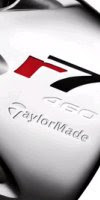
I went to a friend, 35 years as a developer, R&D, in the golf club manufacturing business. He has used and tested every metal, shape, basic design of heads and shafts, the building of clubs, you name it, he's done it. You ask him a question and he will give you an answer, based on findings, not product name.
No single titanium material on its own makes a better performing club head.
A clubface that is too thin may be susceptible to catastrophic failure during impact, as it may be unable to withstand the impact stresses. Failure may occur, for example, proximate the impact region, as well as proximate high stress concentration zones such as scorelines. In addition, the fatigue life of a given club head may be decreased as a result of the thin clubface, which may lead to premature failure of the club head after repeated stressing.No single titanium material on its own makes a better performing club head.

Variable face thickness addresses some of the problems inherent with thin face designs; by providing an area of increased thickness proximate the center of the face, where ball impacts are intended to occur, a stronger club head may be obtained so that the stresses of impact do not affect the integrity of the club head. Adjacent regions may have reduced thickness as compared to the central region of the face, so that weight may be redistributed in the club head.
Titanium 15-3-3-3
Titanium 15-3-3-3 is an age hardenable, metastable-beta alloy used primarily in sheet metal applications due to its excellent strength and cold formability characteristics.
Because Titanium is an extremely light metal, this allows club designers to strategically and carefully move mass inside different areas of the club head to promote a particular performance benefit. For example adding mass to the heel and toe can help increase forgiveness, while moving mass from the crown to the sole will move the center of gravity (COG) position lower for less topspin.
The lower density of Titanium also allows the head to be made much larger in size and still possess the same strength than if steel alloy were used. Steel's higher density means the maximum size for a wood head is about 310-320cc before the head would exceed the weight requirement for a normal club.
Titanium’s 15-3-3-3 and SP700 offer tradeoffs when considering which may be better to seek when making your next purchase. 15-3-3-3 has the highest tensile strength of the 2 but a smaller elongation percentage.
Meanwhile, SP700 still possesses considerable tensile strength but does add a few percentage points in the category of elongation. How does this translate? SP700, through its’ higher elongation figure, can impart more spring upon impact, and thus deliver more energy to the golf ball increasing distance.
SP700 SP-700 titanium alloy represents a significant improvement over conventional Ti-6Al-4V alloy in terms of formability, strength and heat-treatment properties. It achieves reliable, stable performance, allowing use in various parts that require high durability and light weight. Based on its high strength combined with superior formability, demand for SP-700 titanium is expanding rapidly for such applications as golf club heads, wristwatches, mountaineering crampons and tools.
10-2-3 Tit
A readily forgeable alloy that offers excellent combinations of strength, ductility, fracture toughness and high cycle fatigue strength. Typically used for critical aircraft structures, such as landing gear.
10-2-3 Titanium 10% Vanadium, 2% Iron, 3% Aluminum The alloy also possesses the best hot-die forge ability of any commercial titanium alloy and is suitable for near net-shape forging applications and isothermal forging. Ti-10-2-3 also offers high strength/toughness combinations and is deep hardenable. Forging and, finishing in a wide range of combinations of temperature and section reduction, and by selection of heat treatment parameters can develop specific requirements for strength and toughness.
10-2-3 titanium is a special Beta, which was in high demand about 5 to 7 years ago. Due to the 400 cc heads, the faces where small and they needed a metal that was thin but strong to get the heads up to the max C.O.R.
As driver heads got bigger, 10-2-3 became too hot, and on 460 cc-sized heads, the metal became obsolete, due to being way over the limit in C.O.R. What's wrong with that? The new problem was - they had to thicken the faces to bring them down to be legal for play.
Bottom line: 10-2-3 club heads work well. Usually used in 4 piece heads. Break more often (Each different piece (face, crown, skirt, sole) has different stress put on it and is looked to perform different duties, therefore each piece can be made of differing titanium alloys.)
As far as heads having a special technology or secret, they don't. None of them do. The surprising fact is that half the club heads available to us are a standard 4 piece head, using the old method of welding, globby hand done, no internal weights with cheap hot melt that moves around the head as it warms on a summer day.
Is a 10-2-3 titanium alloy better than an SP700? Does 22-4 titanium allow a wood head to perform better than15-3-3-3 titanium? No single titanium material on its own makes a better performing club head. There are titanium alloys that afford the potential to make a better performing wood head, but how that alloy is used and how its final properties are controlled in the manufacture of the wood head are the real points about whether a specific titanium material has any bearing on the performance of the head.
Heat Treatment of a Titanium wood head will affect each and every mechanical property. Because each of the properties plays its own important role in the manufacture and ultimate performance of a Titanium wood head, a high quality head not only requires a good design but excellent control on the processing of the materials used in its creation. This is one reason you can see the price of titanium club heads constructed of the same alloys vary considerably. Heat-treating is as much or more important than using a specific titanium alloy.
Now, for those of you that are new to long drive, (us veterans) would bring 15-30 drivers to a competition of any kind! (and we paid for every driver in our bag!) Why so many drivers? Because we knew they would break! Shafts too. 10 to 12 in one day!
It's just the nature of the beast. So what!
If the manufacturer replaces them, and you love the equipment, don't complain...go win with it!

No comments:
Post a Comment